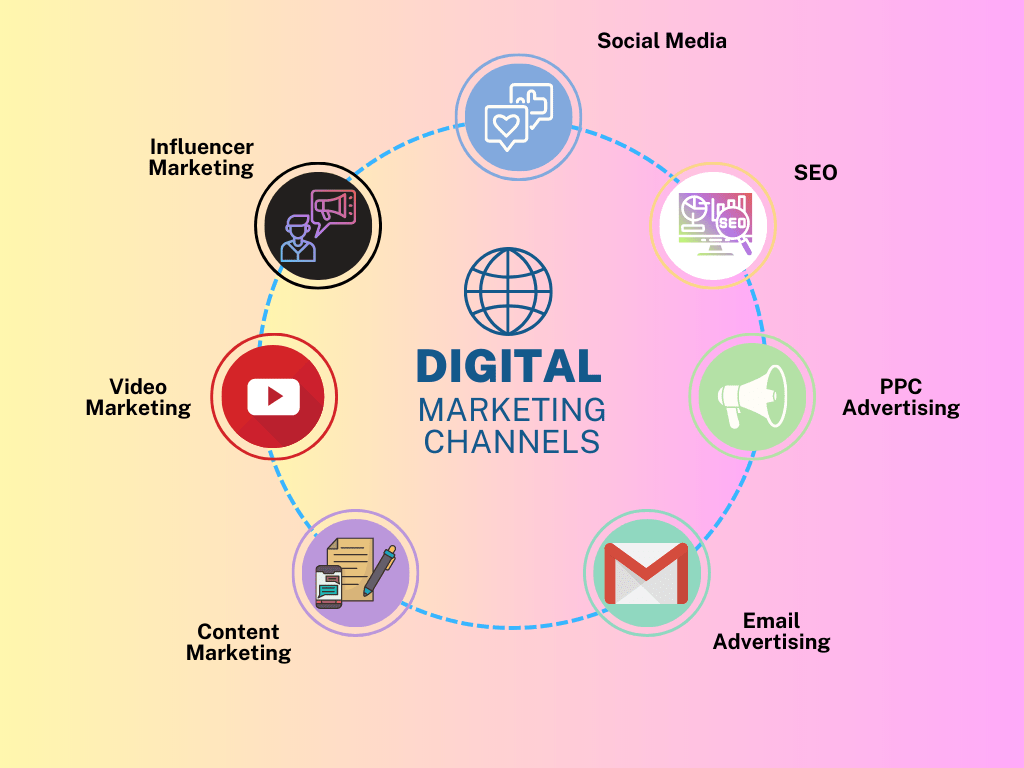Unveiling the Proficiency of The Ad Firm: Your Portal to Exceptional Services
Unveiling the Proficiency of The Ad Firm: Your Portal to Exceptional Services
Blog Article
Enhance User Experience and Drive Traffic With Responsive Internet Layout
In today's electronic landscape, where users are accessing sites from a wide variety of gadgets, receptive website design has become more crucial than ever. With its ability to adapt and seamlessly adapt to different screen sizes, responsive style not only enhances individual experience but also drives web traffic to your web site. Why is this style method so important? How does it increase customer engagement and rise internet site web traffic? In this discussion, we will explore the crucial elements of effective receptive design, delve into the most effective methods for its application, and uncover the keys to improving individual experience while driving more web traffic to your site.
Why Responsive Internet Layout Matters
Receptive web style is an essential facet of contemporary internet development as a result of its ability to guarantee ideal customer experience throughout numerous gadgets and screen sizes. With the spreading of smartphones, tablet computers, and other smart phones, it has ended up being important for internet sites to adapt and supply seamless performance despite the device being utilized.
The key reason why responsive web style issues is that it permits users to have a enjoyable and constant searching experience, despite the device they are using. A responsive website instantly changes its material, format, and layout aspects to fit the display size and resolution of the tool, guaranteeing that customers can conveniently communicate and navigate with the web site without any type of aggravation or disappointment.
Moreover, receptive website design also plays a significant function in seo (SEARCH ENGINE OPTIMIZATION) Internet search engine, such as Google, focus on sites that are mobile-friendly and receptive in their search engine result. By incorporating responsive design concepts, internet sites can improve their visibility and position, leading to increased natural web traffic and potential customers.

Boosting User Interaction Through Responsive Style
Maximizing customer engagement is an essential objective of receptive design, as it makes sure that customers can easily gain access to and engage with web site web content on any kind of device. With the enhancing use of tablets and smartphones, it is vital for internet sites to adjust to various display sizes and resolutions. Receptive style allows web sites to instantly readjust their format and web content to provide a smooth customer experience throughout tools.
Among the major ways receptive layout enhances customer involvement is by lowering lots times. With a responsive site, individuals don't have to wait for separate mobile variations to tons, resulting in quicker accessibility to web content. This improved speed results in higher customer satisfaction and encourages them to invest even more time on the site.
Furthermore, responsive layout improves individual interaction by improving navigating and user interface (The Ad Firm digital marketing). When a web site is developed responsively, food selections and buttons are maximized for touch communications, making it simpler for customers to communicate and browse with the website on their mobile phones. This instinctive and easy to use experience keeps users engaged and urges them to check out even more of the internet site
In addition, responsive layout enables for far better material presence and readability. By adjusting the design and font sizes to various devices, receptive websites make Visit Your URL certain that individuals can conveniently recognize the content and check out. This boosts user engagement by reducing the demand for scrolling or zooming to review the text.
Boosting Website Web Traffic With Responsive Internet Layout
With the expanding appeal of mobile phones, having a site that is responsive to various display dimensions and resolutions is crucial for driving increased traffic. In today's electronic landscape, customers are accessing websites from a variety of gadgets such as mobile phones, tablets, and desktop. Each of these devices has different screen sizes and resolutions, and if your site is not developed to adapt to these variants, it can bring about a bad individual experience and a loss of potential traffic.
Responsive internet layout makes certain that your web site looks and works optimally across all devices. By utilizing adaptable grids, fluid photos, and media inquiries, receptive layout allows your web site to immediately adjust its web content, design, and navigating to fit any kind of display size. This implies that users will certainly have a seamless surfing experience no matter whether they are using a big desktop or a little smartphone computer system.
Crucial Element of Reliable Responsive Layout
Effective receptive layout incorporates several key components that guarantee a smooth customer experience throughout different gadgets. This permits web content to be presented in a visually attractive and understandable manner on any kind of tool.
Another vital component is media questions. These allow designers to use different styles and layouts based on the attributes of the customer's tool, such as display dimension and alignment. By using media queries, designers can optimize the presentation of content for each gadget, making certain that it is easily accessible and readable.
Receptive images are also important in efficient responsive design. Images that are too large can decrease web page tons times on mobile phones, while images that are too tiny might appear pixelated on bigger screens. By using techniques such as receptive photo resizing and careless loading, developers can guarantee that photos are appropriately sized and maximized for each and every tool.
Last but not least, efficient responsive layout entails a mobile-first technique. This Recommended Site implies focusing on and developing content for mobile tools initially, and afterwards expanding and boosting the style for larger screens. This strategy ensures that one of the most crucial content is easily obtainable on smaller sized displays, while still offering a rich experience on bigger gadgets.
Best Practices for Executing Receptive Website Design
Executing receptive web style calls for mindful factor to consider of various finest techniques to make sure an optimal customer experience across various devices. When carrying out receptive web layout., here are some key best techniques to follow.
To start with, it is crucial to focus on mobile customers. With the raising supremacy of mobile tools, designing for mobile-first has ended up being essential. Begin deliberately for smaller sized displays and afterwards progressively improve the format for bigger displays.

Another important ideal method is to maximize pictures for various screen resolutions. Big images can reduce the loading time of your internet site, especially on smart phones with slower connections. Use receptive images that can be resized based on the device's display resolution to boost performance.
Furthermore, examination your site on various devices and screen sizes to ensure a regular and seamless experience. There are different testing devices offered that can help you determine any kind of issues and make essential adjustments.
Finally, focus on usability and accessibility. Ensure that your site is simple to browse, with succinct and clear material. Make certain that your site is easily accessible to individuals with disabilities and follows ease of access standards.
Final Thought
In verdict, responsive internet style plays an important role in improving individual experience and driving traffic to internet sites. By you can find out more embracing receptive design principles, internet sites can guarantee optimum seeing experiences throughout different gadgets, leading to increased individual involvement.
Optimizing customer engagement is a crucial objective of responsive layout, as it ensures that customers can easily gain access to and engage with site material on any device. Responsive layout enables web sites to automatically change their design and web content to provide a seamless customer experience across gadgets.
Furthermore, receptive layout enhances user interaction by enhancing navigating and customer interface.Receptive pictures are also crucial in effective responsive style. By embracing receptive layout concepts, websites can guarantee ideal seeing experiences across different gadgets, leading to boosted customer involvement.
Report this page